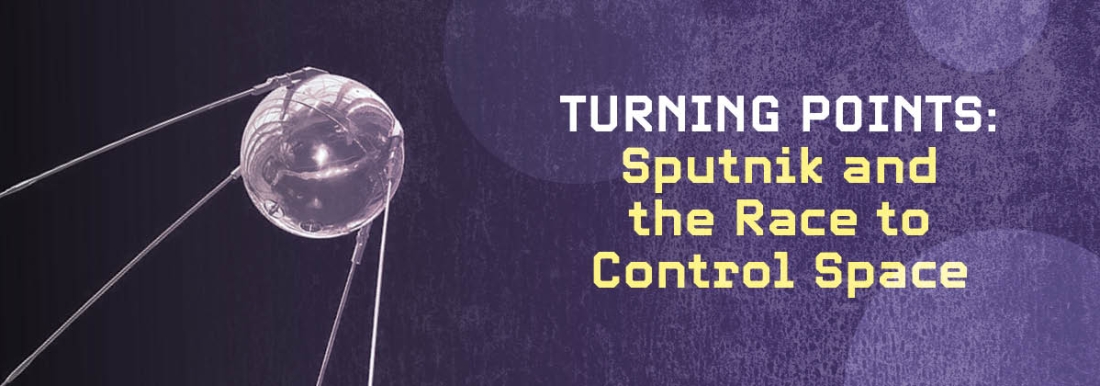With Russia, India, Japan, and most notably China, launching lunar craft and the United States engaged in an assortment of interplanetary expeditions, a new global space race is well underway.
Its roots go back to a basketball-size aluminum orb with four trailing antennae – Sputnik 1 – that the Soviet Union successfully shot into orbit in October 1957. The first artificial satellite placed in space, it jolted the Eisenhower administration and a nascent U.S. space program that launched its own Explorer I, a little more than a year later. The first space race began.
In the final installment of the Library’s Turning Points series in partnership with the U.S. Army Command and General Staff College, Cold War historian Sean Kalic looks back at that stunning Soviet breakthrough and its impact. Sputnik fell from orbit just three months after its launch, but it intensified an arms race with America and heightened Cold War tensions. Concerns about the militarization and weaponization of space persist to this day.
Kalic is a historian and professor in the Department of Military History at the Army Command and General Staff College. Holder of a doctorate in history from Kansas State University, he is the author of seven books including U.S. Presidents and the Militarization of Space, 1945-1967; The Russian Revolution and Russian Civil War: An Essential Reference; and Spies: The U.S. And Russian Espionage from the Cold War to the 21st Century.

